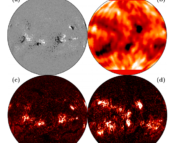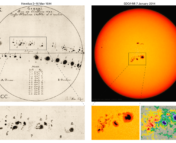Title: Dynamics Of The Interplanetary Gas And Magnetic Fields
Authors: Eugene N. Parker
First Author’s Institution: Department of Astronomy and Astrophysics, Enrico Fermi Institute, University of Chicago, Chicago IL
Status: Published in ApJ [open access on ADS]
Nearly 70 years ago, Eugene Parker, a young professor at the University of Chicago, discovered something that would change out understanding of all stars, including our own Sun. The solar wind is a continuous stream of particles from the Sun that is part of the solar corona, or atmosphere. Prior to Parker’s 1958 discovery, other scientists had surmised that such a stream of particles could exist through observations of comet tails, but none had done the calculations to rigorously show that the solar wind must exist.
Today we’re going to take a closer look at the physics that led to this monumental discovery to understand the methods behind an idea that once seemed like madness.
A Static Atmosphere
Parker’s analysis centered on two main questions: what, if anything, causes the acceleration of a gas flowing outward from the Sun and how does such a gas flow affect the configuration of the solar magnetic field far from the Sun (e.g. at the outer reaches of the solar system)? To answer these, he first calculated the kinetic energy flux, or the rate of kinetic energy transfer through a surface, of the solar corona at Earth using observed parameters. The kinetic energy flux at Earth acts as a reference point for analyzing the behavior of the solar wind. Parker additionally made a few assumptions that would guide his derivations. Namely, he considered the Sun as a solid sphere and initially neglected any contribution from the solar magnetic field. He also defined the radius a, which separates the inner and outer solar corona as shown in Figure 1.
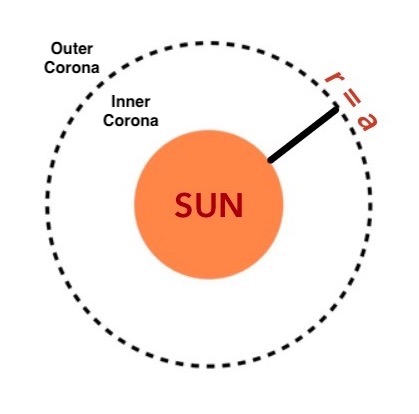
Parker then considered a scenario where the gas surrounding the Sun is in static equilibrium, i.e. the forces on the surrounding gas sum to zero. Using this assumption, Parker derived equations for the solar wind’s density and pressure. He found that the density became zero at an infinite distance from the Sun, which agrees with the expected density of interstellar space. The calculated pressure, however, was much smaller than the expected pressure at large distances, which led Parker to conclude that the solar corona is not static, but expanding.
. . . Now with expansion!
Next, Parker derived solar wind properties under the assumption that the corona is undergoing steady expansion. Under this assumption, a few more things need to be considered. In particular, the mechanism for heating the corona and how heating is distributed throughout the corona were unknown variables. To account for this, Parker assumed that the temperature distribution throughout the corona was known. By using equations of motion, continuity, and the assumption that heating vanishes past a certain distance, he derived equations for the velocity profile for the corona as shown in Figure 2. By showing that these equations hold for multiple dimensions, he found that an expanding corona yielded reasonable values of density and pressure at distances far from the Sun.
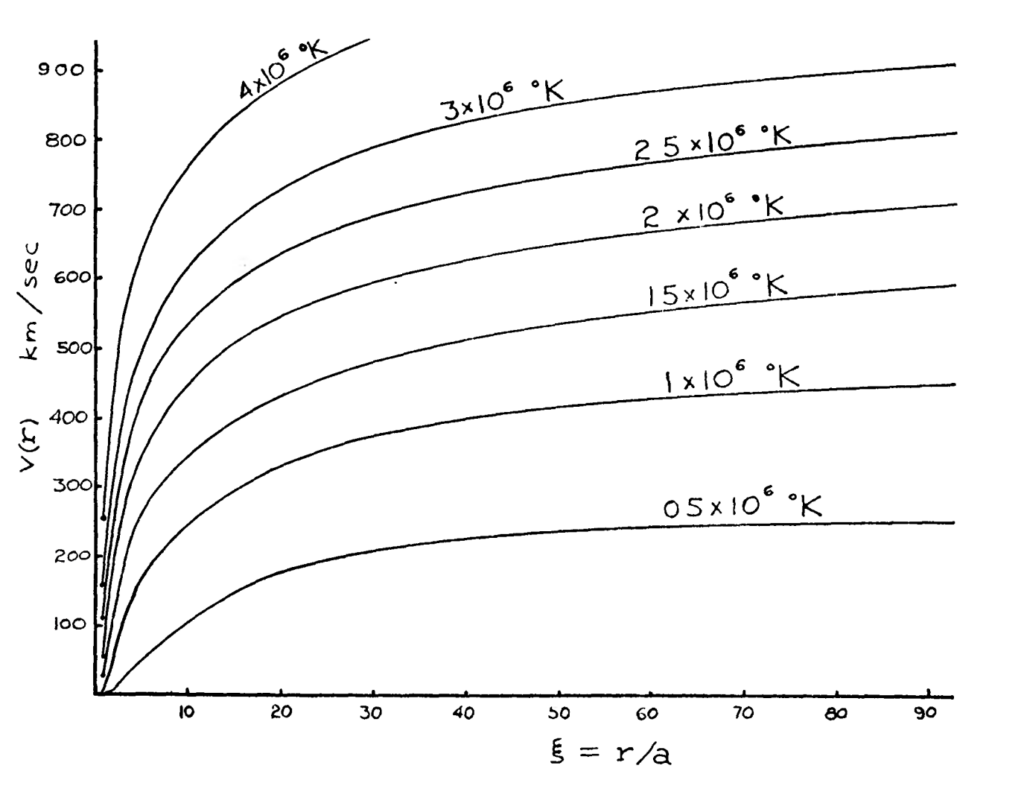
Now that expansion is established, Parker went on to explore the heating of an expanding corona. The kinetic energy flux at Earth acts as a boundary condition when considering the heating mechanism. He assumed a mechanical heating mechanism, i.e. heating by hydrodynamic waves, and found that the required temperature and amount of mass loss were consistent with the assumed values at Earth. Because of this, Parker concluded that the corona is indeed expanding and is being heated by some unconfirmed mechanism.
Look out! It’s a magnetic field!
Finally, Parker considered the effect a magnetic field would have on the expanding corona. Because the outflowing material is a plasma,a gas that is completely ionized, its motions can affect magnetic fields. Parker sought to determine how an expanding corona would affect the solar magnetic field configuration at large distances. For a non-rotating Sun, he determined the magnetic field would be entirely radial. However, the Sun is a rotating star. With this condition, Parker determined that at large distances, the expanding solar wind causes the solar magnetic field to spiral, as shown in Figure 3. This configuration is now known as the Parker spiral.
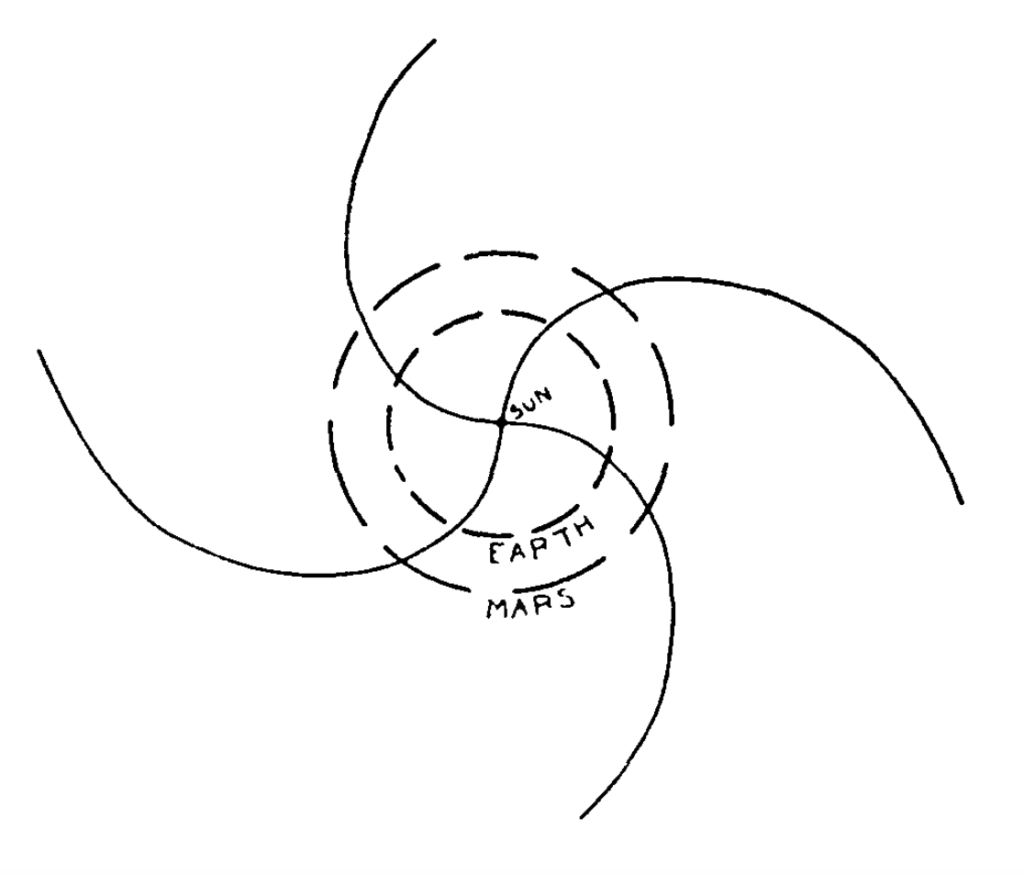
Through his derivations, Parker showed that the solar wind should exist although it would take until 1962 for Parker’s models to be confirmed. Even today, some of the questions Parker posed remain unanswered and several missions are currently underway to answer these big questions. However even with these unknowns, solar and stellar astronomers have a lot to thank this paper for.

